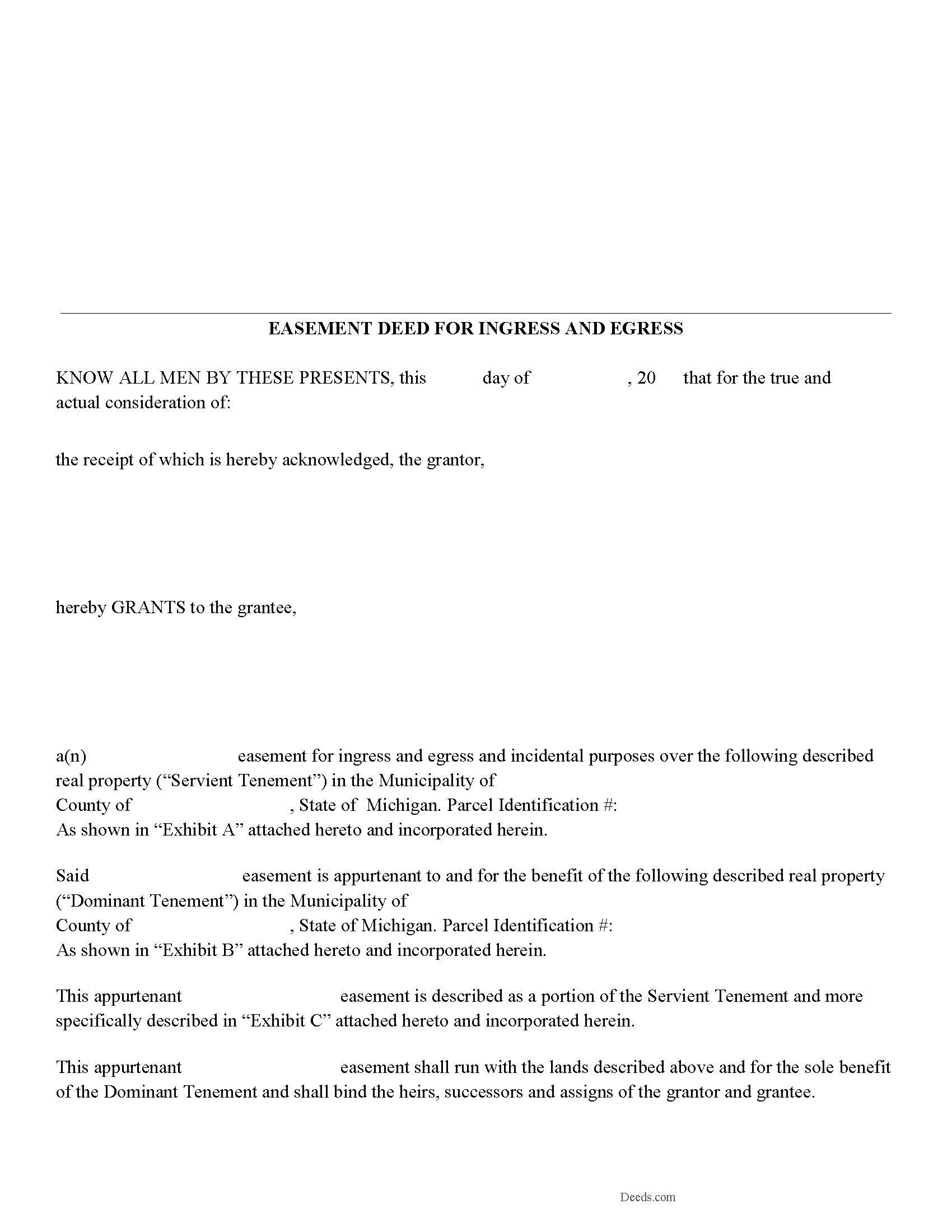Michigan Easement Deed Forms

Michigan Easement Deed Overview

How to Use This Form
- Select your county from the list on the left
- Download the county-specific form
- Fill in the required information
- Have the document notarized if required
- Record with your county recorder's office
An easement is an interest in real estate that gives one person the right to use someone else's land for a specific purpose. The focus of an easement is on usage, not on ownership. There are two types of easements: an easement appurtenant and an easement in gross. Further, easements can be affirmative or negative. An appurtenant easement benefits the dominant estate and runs with the land when the property is transferred. An easement in gross benefits an individual or a legal entity. An easement in Michigan is generally created by a deed in writing or by operation of law. The easement deed should specify the terms and conditions of the easement itself.
As an interest in real property, an easement deed in Michigan must be signed, dated, and acknowledged by the grantor. If an easement deed is executed in Michigan, it can be acknowledged before a judge, clerk of a court of record, or notary public within the state and should be endorsed with a certificate of acknowledgment by the officer taking acknowledgments (565.8). Michigan adheres to the uniform recognition of acknowledgments act, which means that an instrument acknowledged out of state can be recorded in Michigan if the instrument complies with that state's laws (565.9).
Recording can be a crucial step in protecting easement rights. An unrecorded easement deed is void as against any subsequent purchaser in good faith and for a valuable consideration, of the same real estate or portion thereof, whose conveyance is first duly recorded (565.29).
(Michigan ED Package includes form, guidelines, and completed example)
Important: County-Specific Forms
Our easement deed forms are specifically formatted for each county in Michigan.
After selecting your county, you'll receive forms that meet all local recording requirements, ensuring your documents will be accepted without delays or rejection fees.
How to Use This Form
- Select your county from the list above
- Download the county-specific form
- Fill in the required information
- Have the document notarized if required
- Record with your county recorder's office
Common Uses for Easement Deed
- Transfer property between family members
- Add or remove names from property titles
- Transfer property into or out of trusts
- Correct errors in previously recorded deeds
- Gift property to others